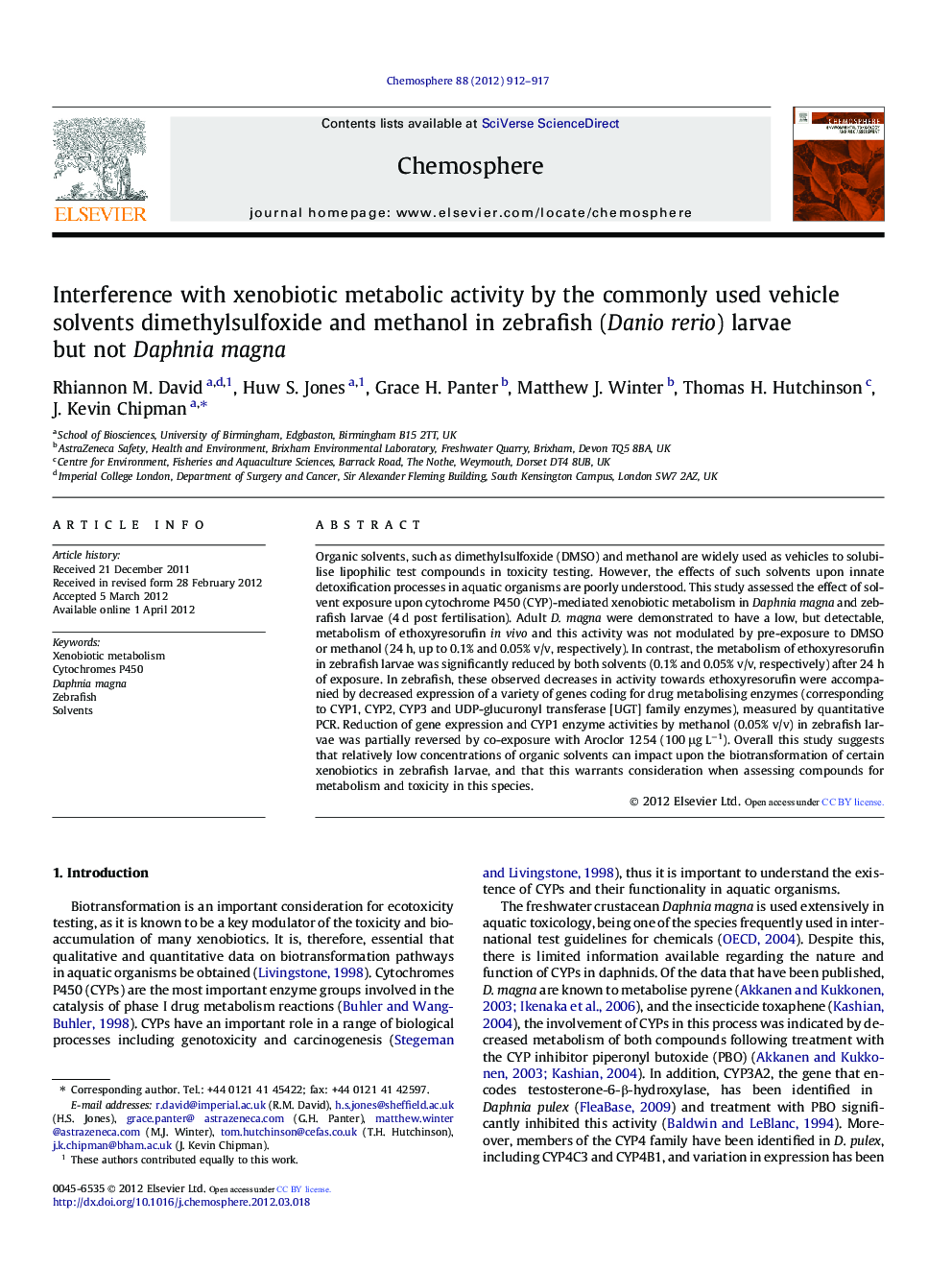| کد مقاله | کد نشریه | سال انتشار | مقاله انگلیسی | نسخه تمام متن |
|---|---|---|---|---|
| 6311033 | 1307498 | 2012 | 6 صفحه PDF | دانلود رایگان |

Organic solvents, such as dimethylsulfoxide (DMSO) and methanol are widely used as vehicles to solubilise lipophilic test compounds in toxicity testing. However, the effects of such solvents upon innate detoxification processes in aquatic organisms are poorly understood. This study assessed the effect of solvent exposure upon cytochrome P450 (CYP)-mediated xenobiotic metabolism in Daphnia magna and zebrafish larvae (4 d post fertilisation). Adult D. magna were demonstrated to have a low, but detectable, metabolism of ethoxyresorufin in vivo and this activity was not modulated by pre-exposure to DMSO or methanol (24 h, up to 0.1% and 0.05% v/v, respectively). In contrast, the metabolism of ethoxyresorufin in zebrafish larvae was significantly reduced by both solvents (0.1% and 0.05% v/v, respectively) after 24 h of exposure. In zebrafish, these observed decreases in activity towards ethoxyresorufin were accompanied by decreased expression of a variety of genes coding for drug metabolising enzymes (corresponding to CYP1, CYP2, CYP3 and UDP-glucuronyl transferase [UGT] family enzymes), measured by quantitative PCR. Reduction of gene expression and CYP1 enzyme activities by methanol (0.05% v/v) in zebrafish larvae was partially reversed by co-exposure with Aroclor 1254 (100 μg Lâ1). Overall this study suggests that relatively low concentrations of organic solvents can impact upon the biotransformation of certain xenobiotics in zebrafish larvae, and that this warrants consideration when assessing compounds for metabolism and toxicity in this species.
⺠Daphnia magna have a detectable activity towards ethoxyresorufin. ⺠This activity is unaffected by 24 h exposure to dimethylsulfoxide or methanol. ⺠EROD activity in zebrafish is inhibited by 24 h exposure to both DMSO and methanol. ⺠DMSO and methanol exposures (24 h) decreased expression of CYP and UGT genes in zebrafish larvae. ⺠A maximum solvent concentration of 0.01% v/v is recommended for use where possible in zebrafish.
Journal: Chemosphere - Volume 88, Issue 8, August 2012, Pages 912-917